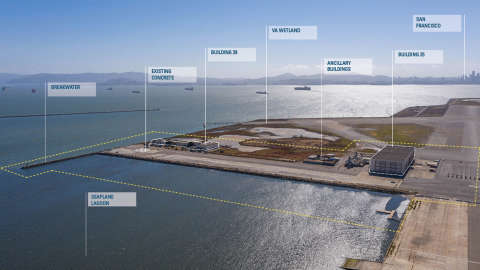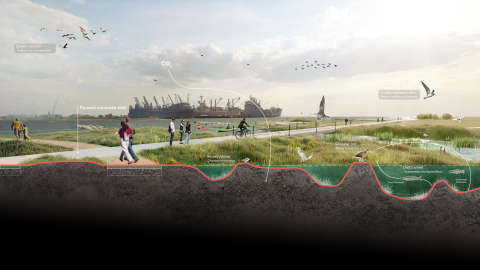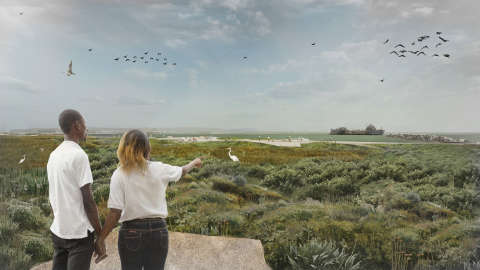

Experiencing the Natural World in Transition
De-Pave Park is one of several waterfront parks included in the Specific Plan for the redevelopment of Alameda Point, a decommissioned military base on the East Bay shoreline that will become a mixed-use community serving the public. De-Pave Park is noteworthy for its nature forward, restrained design approach, through material recycling, balanced grading, and introduction of an expansive intertidal marsh, that transforms the large, paved airstrip into an ecological park that welcomes sea level rise. As sea levels rise, wetlands will become inundated resulting in more subtidal habitats. This project is a model for parklands to be planned to create more future wetlands by thinking about landscapes as transitional – allowing natural forces to change landscapes over time to create a resilient waterfront.

As a model for mitigating the effects of climate change, De-Pave Park will sequester far more carbon than is emitted to build and maintain it—offsetting its own carbon footprint in just 4 years. After which, the park will continue to sequester large amounts of carbon as part of the global solution to climate change. By restoring nature and engaging the Bay, De-Pave Park will be an ecologically productive landscape for native wildlife and a recreational and educational resource for the community. The park design re-uses 100% of the removed paving in the existing landscape to create fill and landscape features for future park areas that will remain above the waterline, while allowing 60% of the park to become intertidal with 3-6 feet of sea level rise, and 90% of the park becoming de-paved. Nearly all of the paved areas required for circulation will utilize existing paving. The recycling program dramatically reduces the carbon footprint of construction, while the increased native planting areas will increase carbon sequestration.

De-Pave Park creates 19-acres of new tidal marshes and wildlife habitat for aquatic species, shorebirds, waterfowl, and marine mammals within a dense urban area with public access and educational programming. Public access includes pedestrian trails, observation points over the marsh, that are accessible to people of all physical abilities, a promenade running the length of the park, interpretive educational signage and programs, beach and terraced seating, picnic areas and nature play, tide pools, restrooms, and parking lot. The park design was approved by the Alameda City Council and has received restoration funding through the Measure AA Grant from the San Francisco Bay Restoration Authority.













